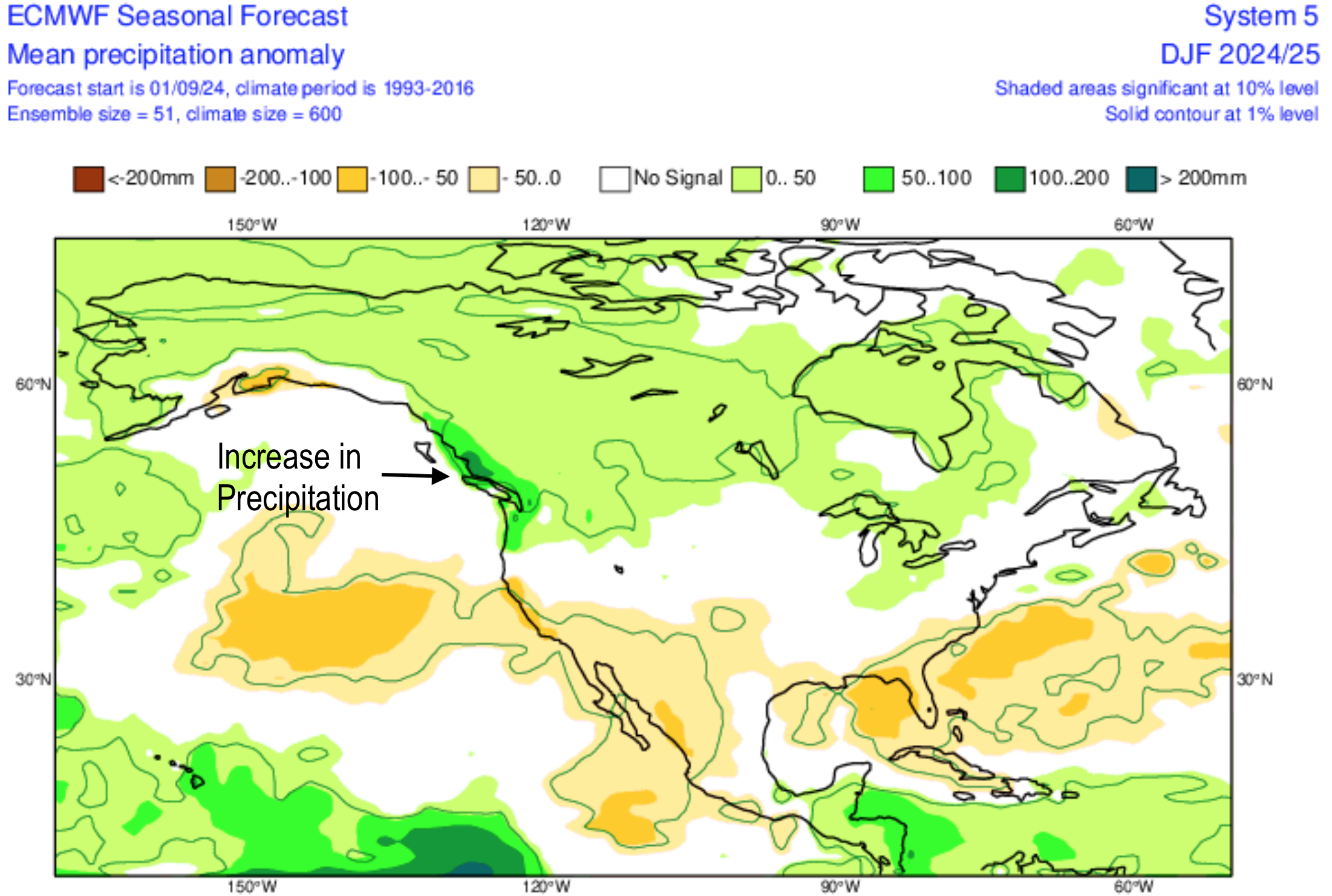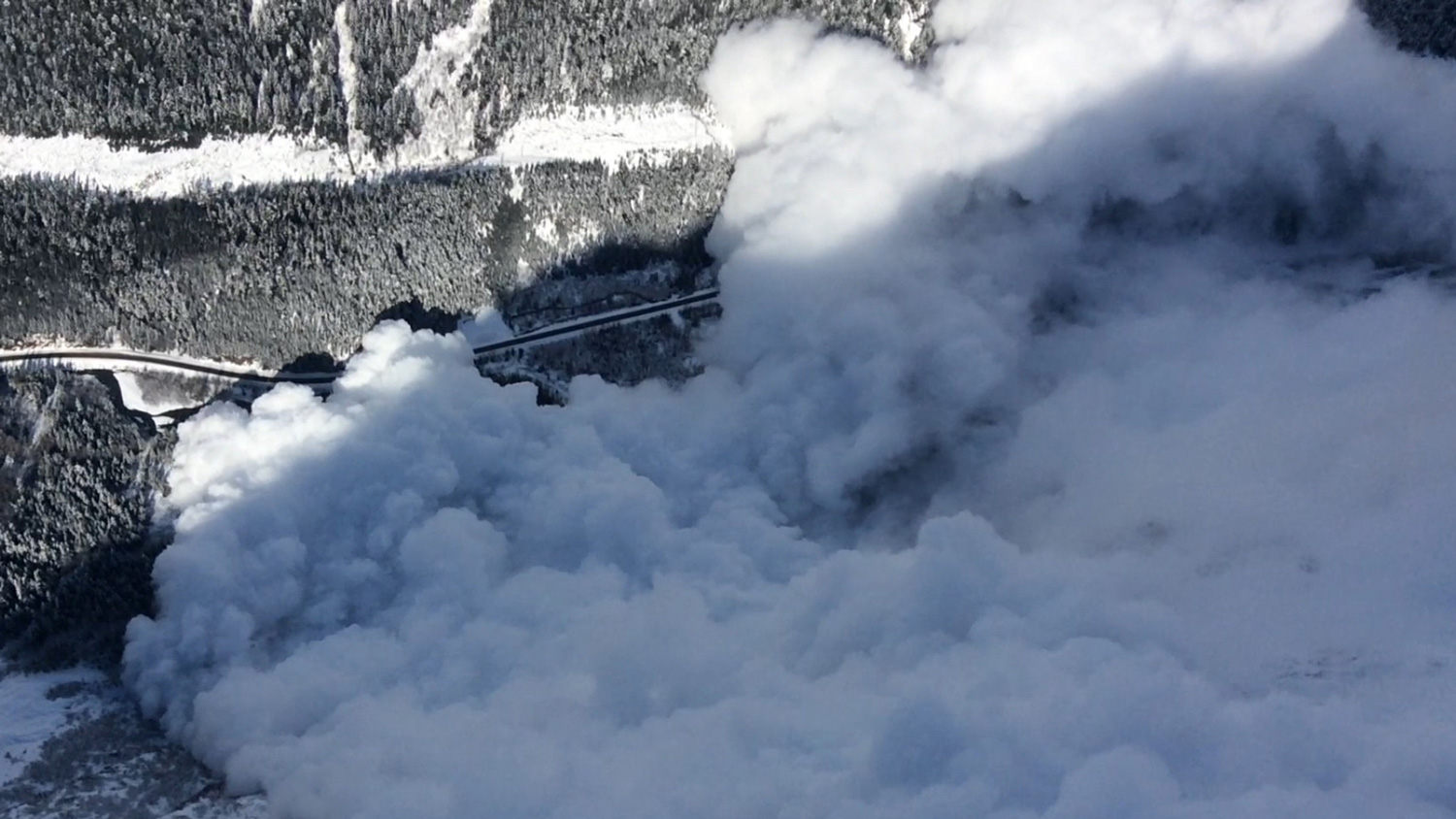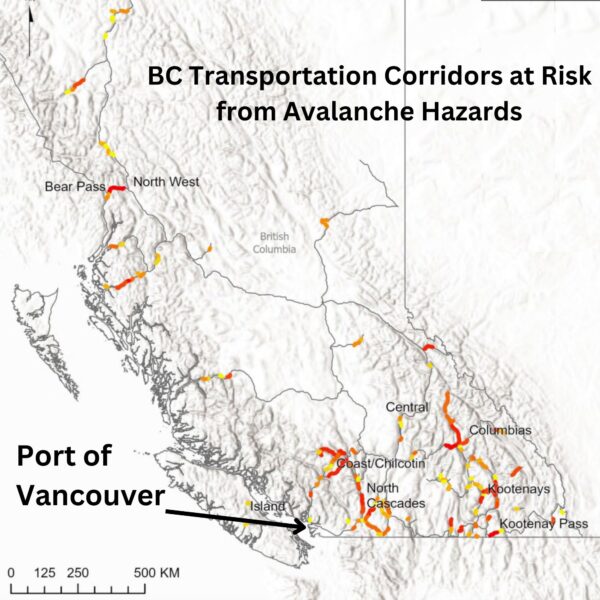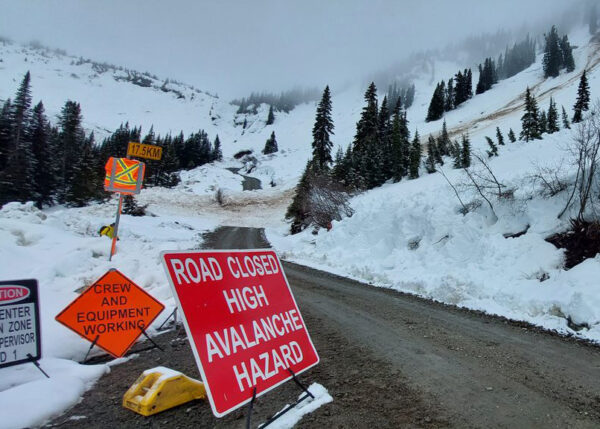With La Nina conditions favoured to develop from September to November 2024 and expected to persist through January to March 2025, it’s essential to understand how this climate phenomenon will affect Canada’s winter. Industries like transportation, tourism, and infrastructure need to be prepared for the potential La Nina impacts in British Columbia and Northwestern United States.
La Nina Impacts on Industry Sectors in Winter 2024–2025
What is La Nina?
La Nina events typically bring cooler-than-normal temperatures due to the cooling of sea surface temperatures (SST) in the equatorial Pacific Ocean. This shift significantly affects weather patterns worldwide, including in British Columbia and Northwestern United States, where La Nina is linked to colder, snowier winters.
In 2024, La Niña has a 60% chance of developing during the fall, and its effects will likely persist into the winter months .
La Nina Climate Outlook for December, January, and February
The European Centre for Medium-Range Weather Forecasts (ECMWF), a leading global weather forecasting organization, provides comprehensive models that predict atmospheric and oceanic conditions. These forecasts are critical for understanding the potential impacts of La Nina impacts during the winter months in British Columbia and Northwestern United States.
Cooler Temperatures
Using the SST 2m temperature graph, we can observe the emergence of cooler Sea Surface Temperatures in the equatorial Pacific during the December, January, and February period, which is a key indicator of La Nina. This cooling effect typically contributes to colder conditions along the Northwest Coast of North America, including British Columbia.

Increased Snow Fall
Using the precipitation graph, we can see the anticipated increase in precipitation during the December, January, and February period, which is typical of La Nina’s impact, particularly in regions like British Columbia and Northwestern United States.

These insights help predict the cooler temperatures and increased snow associated with La Niña, which could lead to significant winter impacts in British Columbia.
La Nina’s Impact on Canada’s Snow and Avalanche Patterns
In British Columbia and Northwestern United States the La Nina impacts favour cooler than average temperatures with heavy snowfall which is linked to increased avalanche activity.
A study by McClung (2013) notes that during La Niña years, BC experiences more avalanches, many of which are dry avalanches. These pose a significant threat to infrastructure and human life due to their ability to generate higher impact forces and travel greater distances, which heightens avalanche hazards on highways, resource roads, and other lower-elevation infrastructure.

Impact on British Columbia’s Transportation and Goods Movement
La Nina impacts lead to more severe winter weather along key transportation routes, often resulting in highway closures that disrupt the movement of goods.
With over 1,350 avalanche paths and 62 areas threatening BC highways McClung (2013), La Niña impacts Canada by affecting critical infrastructure, including railways and highways.
BC’s Transportation Corridors at Risk
The map highlights key transportation corridors with elevated avalanche risks, illustrating how La Nina impacts increase these hazards. During La Nina years, these routes face a higher likelihood of closures, directly affecting the movement of hundreds of thousands of tonnes of goods daily across the province.
Port of Vancouver alone handles over $240 billion in goods each year, Orton, T. (2021, November 22). making it a critical hub for trade and transportation in Canada.

La Nina Impacts for Railways
Railways operating in Canada are especially vulnerable to the effects of winter weather, with cold temperatures, snow, and ice posing significant operational challenges. La Niña winters are expected to bring colder-than-average temperatures and heavier snowfall across key regions, amplifying these difficulties. Mountainous regions, already prone to heavy snowfalls and steep grades, will face even more severe conditions, potentially further disrupting the movement of goods and impacting Canada’s GDP.
La Nina Impacts Worksite Access in Remote and Mountainous Areas
La Nina impacts can cause significant revenue losses in British Columbia due to avalanche-related closures. Heavy snowfall and elevated avalanche risks disrupt transportation routes, halt remote work operations, and delay access to sites.

Industries with worksites or access roads vulnerable to avalanche closures face significant operational risks, especially during severe winter seasons.
Industry's Must Be Prepared for Winter Closures
As per WorkSafeBC guidelines, if a workplace is at risk of avalanches, employers are required to conduct a comprehensive avalanche risk assessment before commencing any work. With the arrival of La Niña, bringing heavier snowfall and colder temperatures, avalanche hazards are expected to increase, leading to potential extended closures. Proactive avalanche risk mitigation is essential to maintaining safe operations and minimizing costly disruptions during winter months.
In Canada projects affected by avalanche hazard should seek out a risk assessment and operate under and avalanche safety plan.
Increased Snow Avalanche Threat to Property and Life
Historic Canadian Avalanche Disasters
Historical accidents highlight the devastating effects of avalanches in British Columbia. Noteworthy examples include the railway accident on Rogers Pass on March 4, 1910, where 58 railway workers were killed, the Granduc Mine accident on February 18, 1965, which claimed 26 lives, and the North Route Café accident on Highway 16 west of Terrace on January 22, 1974, where seven stranded motorists were killed.
Historic United States Avalanche Disasters
In 1910, the Northwestern United States, including Washington State, experienced a particularly severe winter. This harsh winter culminated in one of the deadliest avalanche disasters in U.S. history, known as the Wellington Avalanche. On March 1, 1910, near the town of Wellington, Washington, an avalanche swept two Great Northern Railway trains off the tracks, killing 96 people. This tragic event remains one of the largest avalanche disasters in U.S. history.
La Nina Impacts on Avalanche Disasters
From the previously mentioned avalanche disasters 1910 and 1974 were both La Nina years.
All these accidents occurred during major winter storms that triggered widespread avalanche activity. The destructive force of dry slab avalanches, which can travel quickly and with immense force, caused significant property damage and tragically took the lives of individuals who were exposed, often unknowingly, to these hazards.
Although climate is not the direct cause of avalanche formation and size, larger snow years tend to produce more frequent avalanches, some of which can be large and destructive.
Prepare for La Nina
As La Niña is forecasted to develop and potentially persist through early 2025, businesses and industries in Canada, particularly in BC, should prepare for its potential impacts. We will continue to monitor the climate information as it becomes available, helping organizations stay informed and ready to respond to these evolving conditions.
The daily and hourly fluctuations of avalanche hazards and weather conditions require expert analysis. At Alpine Solutions, our dedicated team of avalanche forecasters provides real-time assessments, ensuring that risk-based, probabilistic decisions are made for your operation. With our services, you can stay one step ahead of the elements and operate with confidence throughout the winter season





Reader Interactions